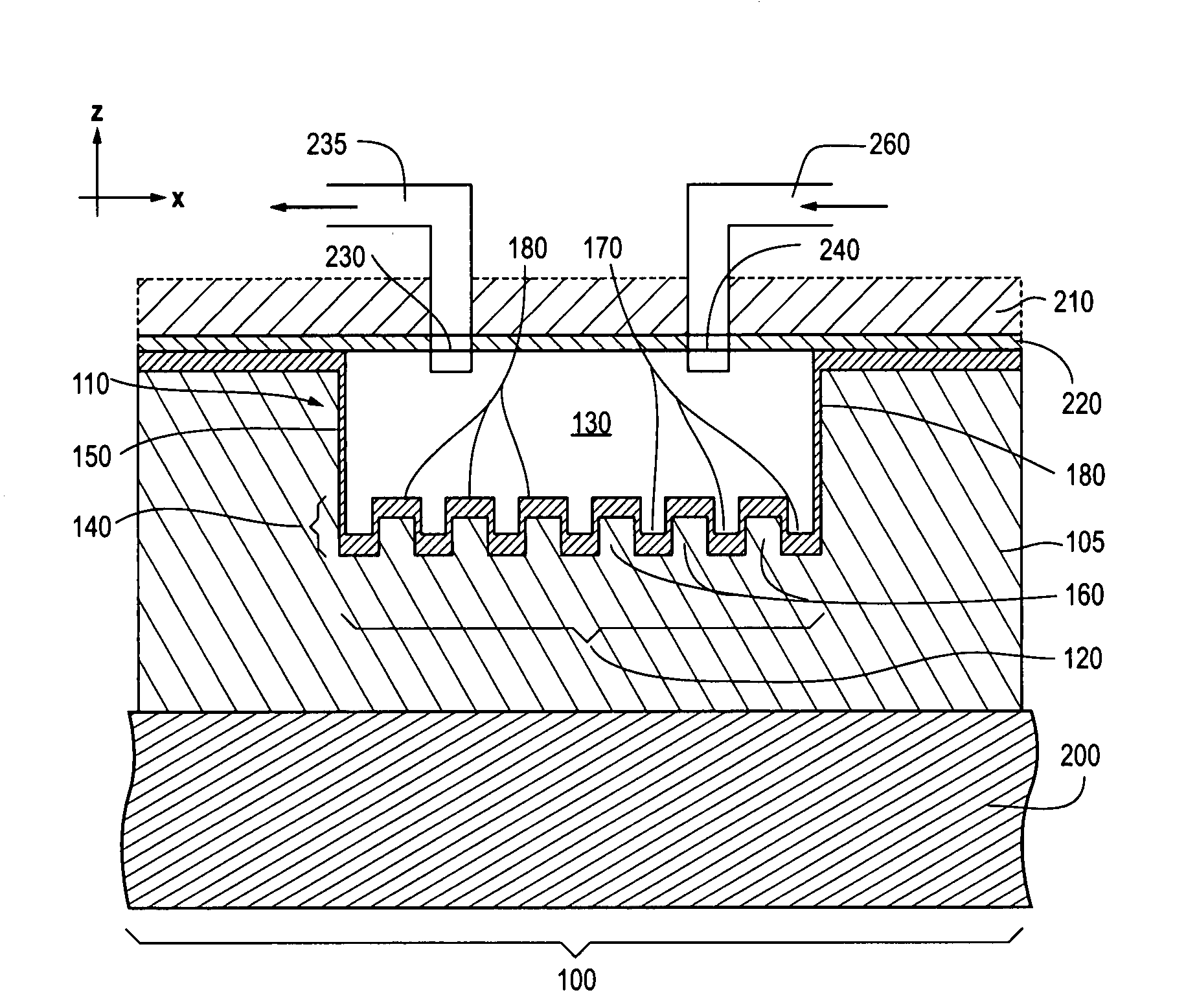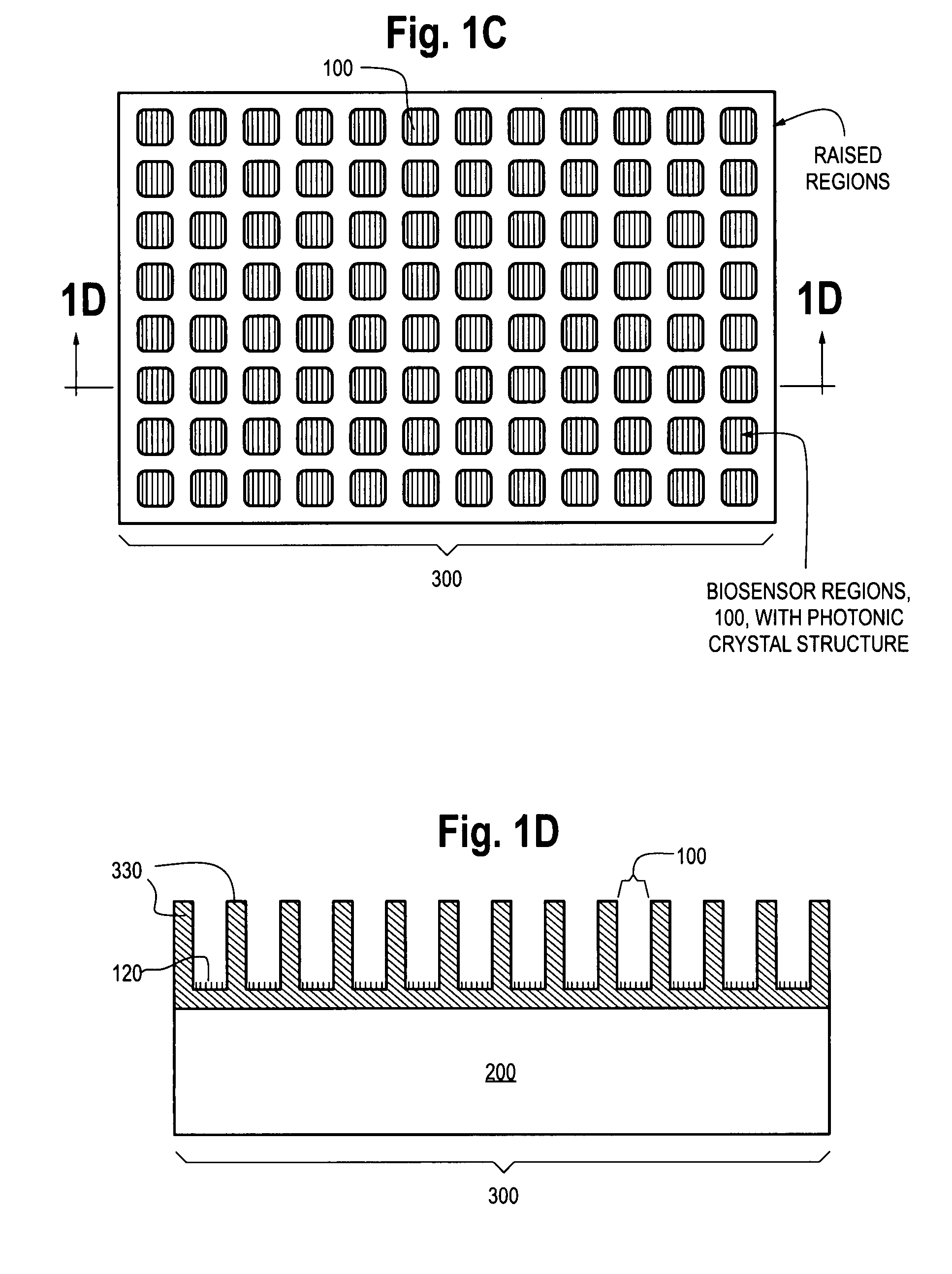Photonic crystal sensors with intergrated fluid containment structure
a technology of intergrated fluid and photonic crystals, applied in the field of photonic band gap structures, can solve the problems of changing the photonic band gap, adding to the overall cost and complexity of fabrication of these devices, etc., and achieves the effects of enhancing the structural rigidity and flatness of the sensor, preventing leakage, and facilitating the handling of fluid samples
- Summary
- Abstract
- Description
- Claims
- Application Information
AI Technical Summary
Benefits of technology
Problems solved by technology
Method used
Image
Examples
example 1
Single-Step Fabrication and Characterization of Photonic Crystal Biosensors with Polymer Microfluidic Channels
Introduction
[0068]A method for simultaneously integrating label-free photonic crystal biosensor technology into microfluidic channels by a single step replica molding process is presented in this Example as one possible implementation of the disclosure.
[0069]By fabricating both the sub-micron features of the photonic crystal sensor structure and the >10 μm features of a flow channel network in one step at room temperature on a plastic substrate, the sensors are automatically self-aligned with the flow channels, and patterns of arbitrary shape may be produced. By measuring changes in the resonant peak reflected wavelength from the photonic crystal structure induced by changes in dielectric permittivity within an evanescent field region near its surface, detection of bulk refractive index changes in the fluid channel, or adsorption of biological material to the sensor surface ...
example 2
Photonic Crystal Sensors with Fluid Containment Structures Having a Microplate Configuration
[0108]Introduction
[0109]The present disclosure also contemplates microplate sensor systems comprising arrays of microwells, each having individually addressed photonic crystal sensors. Microplate sensor systems of this aspect of the present disclosure may further comprise integral micron scale fluid containment structures (channels) for introducing fluid samples containing analytes into selected microwells.
[0110]FIG. 9 is a schematic, top plan view of a microwell configuration 900 for a sensor system of this embodiment in the form of an array of 12×8 microwells 920. The sensor includes a fluid handling system 910 in the form of fluid channels 940 for delivery of fluid samples from ports 930 to the microwells 920. Each of the fluid channels 940 include photonic crystal sensors 950. The bottom surface of the microwells 920 include a photonic crystal sensor as shown the embodiment of FIG. 1A. Th...
PUM
 Login to View More
Login to View More Abstract
Description
Claims
Application Information
 Login to View More
Login to View More - R&D
- Intellectual Property
- Life Sciences
- Materials
- Tech Scout
- Unparalleled Data Quality
- Higher Quality Content
- 60% Fewer Hallucinations
Browse by: Latest US Patents, China's latest patents, Technical Efficacy Thesaurus, Application Domain, Technology Topic, Popular Technical Reports.
© 2025 PatSnap. All rights reserved.Legal|Privacy policy|Modern Slavery Act Transparency Statement|Sitemap|About US| Contact US: help@patsnap.com



